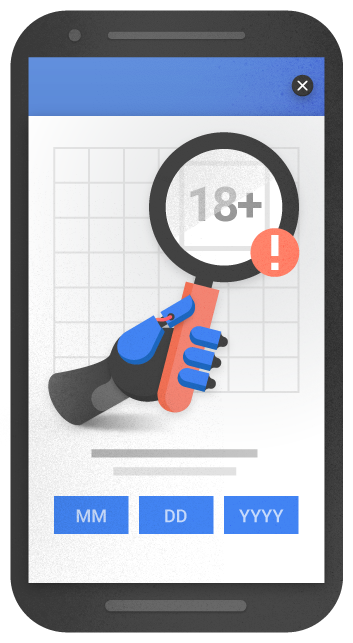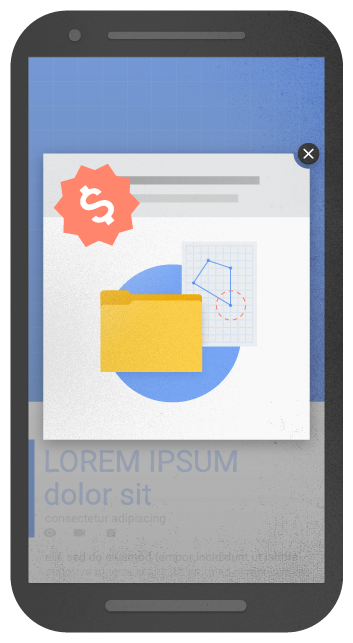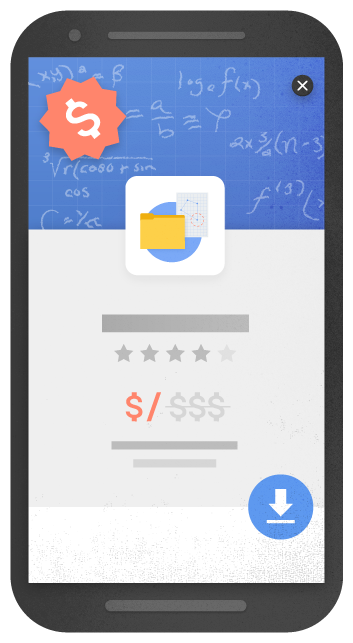Interstitial, guidelines to use them without hassle on user experience
They are called interstitials and are dialog boxes or ads that are particularly invasive and annoying because they literally appear “in the middle” of a web page and hinder the user’s enjoyment of the content. Over the past few years we have become increasingly familiar with the term, included in the group of elements Google considered in its Page Experience Update, but it is probably worthwhile to delve deeper into what it means and what issues the presence of these interstitials on our pages can create, even in light of the crackdown launched by Google to benefit the user experience by also updating the guidelines for their proper use.
What are the interstitials
Literally, interstitial means “standing in the middle” of something; the adjective interstitial is used above all in the medical and scientific field to describe something “situated in the interstices between equal or analogous elements” like in the case of cells.
On the web, however, interstitial is an element of the page that hinders the display of content by users, usually for promotional purposes. In this sense, they have an effect similar to that of the dialogs, from which they differ, however, for the space occupied: the dialogs are overlays only on a part of the page (sometimes also obfuscating the underlying content), while interstitials overlap on the entire page and thus cover the main content that the user is interested in viewing.
Usually, interstitials are distinguished by the purpose of the advertisement, which can be informative or advertising. Informative interstitials are notices on cookies (which occupy a maximum of 20% of the screen and are mandatory by law), those that relate to any age limits imposed on the continuation of operations (purchase of alcohol, material related to sexuality and so on) and those that report the availability of an official app of the site visited (also in this case, usually this type of ad does not occupy more than a fifth of the screen).
Advertising interstitials includes all cases of promotional use, normally recognized and blocked by most Ad-Blockers, as well as all pop-up Ads. Then there is a particular case of interstitial advertising that works as self-promotion, making the ad appear when the user moves the mouse cursor towards the icon to close the tab.
What are interstitials for
Classically, interstitials have been widely exploited for commercial purposes, so much so that a section of the Google Ad Manager guide talks about it in extremely positive terms.
In this sense, interstitial ads are “full-page advertising units posted between screens while browsing mobile apps”, which offer the user an experience “full-screen apps in points of natural app transition, for example at launch, in the pre-roll of a video or when loading a game level”.
These ads bring at least 4 advantages, continues the official guide of Google Ad Manager, because:
- They are ideal for brands – being large, “they offer canvas suitable for storytelling and, consequently, represent a very interesting format for advertisers who promote a brand”.
- They are highly engaging – always because of their size, combined with the use of multimedia elements and the attractiveness they exert on the best brands, increase engagement and generate high clickthrough rates and conversion rates.
- They are in high demand – according to statistics, they are “the most desirable ad format for both brand-oriented mobile ad advertisers and those interested in performance”.
- They increase the variety of ads, “minimizing the invisibility of banners and increasing overall engagement with ads”.
More recently, speaking about the problem of intrusive interstitial, Google’s Patrick Kettner recalled that sites often need to show dialogs for various reasons, and that even Google recognizes as legitimate some ways of using these full-page windows. In particular, Googlebot considers the use of legal interstitials such as privacy policies or cookie notifications, or login requests to the site and access to paywall content in subscription, to be regular and non-negative, that therefore should not cause problematic consequences for the ranking of the site.
The promotional uses of interstitials: applications and advantages
From a business perspective, for years interstitials have been an excellent form of promotion to intercept user attention: by their very nature, such ads appear as soon as a person arrives on a page of the site and cover a large part of the display (sometimes even the entire screen) before the user reaches the content to which he or she was initially oriented and intended; in this way, inevitably the visitor’s attention is focused on the advertising material, although he or she has the option of skipping the ad by closing the dialog box or finally reaching the content at the end of the countdown that automatically redirects to the original destination.
Interstitial ads are different from banner ads in that they are interactive and sometimes perform better than banner ads, as Erik Newton notes; also, by taking up the entire screen, interstitial is harder for users to turn off, and some brands use tricks such as an ad background that hides or makes the closing “X” button inconspicuous, thus leading the person to look at the ad and pay attention to it.
And so, site owners have often leveraged interstitials for their ability to focus users’ attention on the advertising material and increase response, and over the years many brands have achieved positive returns – although, the expert adds, interstitials are only absolutely effective if implemented correctly.
Globally, however, studies say that historically interstitial ads have produced results: several brands that used them have seen strong returns in the past, and for example, a hotel chain saw a 25-fold increase in video views, game developer saw a 7-fold increase in conversions, while Airbnb and Pinterest saw a 100 percent and 300 percent increase in installs, respectively, thanks to interstitial ads.
What intrusive interstitials mean and what they are
Even in cases of lawful and permitted use, however, interstitials violate one of Google’s basic rules, or rather the quality of the user experience that Google seeks to ensure, that is to serve a content “that organically fits the page and does not interrupt what the user is trying to do on the page itself”.
For characteristics, in fact, an interstitial represents a block, an obstacle to the achievement of the desired content, and that is why they have become a problematic aspect, especially for navigation from mobile.
An interstitial becomes intruve (and is negatively considered by Googlebot) when it covers the entire page with something irrelevant, disturbs what a user is trying to achieve and prevents them from interacting with the affected page. From a technical point of view, the contents below are present on the page and available for indexing by Google, but for the user may be visually obscured, and so people can not easily access the content they were expecting when they touched the search result.
Excessive use of these elements can then whip surfers and erode their trust in the website, but at the same time also make it difficult for Google and other search engines to understand and analyze the content, which can lead to poor organic performance.
Intrusive interstitials, examples of techniques bothering users
Pages that show intrusive interstitial offer a poor user experience compared to other pages where content is immediately accessible, and as said this can be quite problematic on mobile devices, where screens are often smaller.
Just to improve the search experience from mobile devices, as early as January 2017 Google has made intrusive interstitials a negative ranking factor, degrading the ranking of pages where content is not easily accessible for users from search results from mobile devices, then continuing with the inclusion of the absence of intrusive interstitial among the ranking factors of the Page Experience.
It is useful at this point to understand the techniques that make content less accessible to users, and it is always Google to provide some examples:
- Displaying a pop-up that covers the main content as soon as the user accesses a page from the search results or while browsing the page.
- Display an autonomous interstitial that the user must ignore before accessing the main content.
- Using a layout in which the above the fold part of the page looks like an autonomous interstitial, but the original contents were embedded below the fold.
Pop-ups, therefore, can also be considered “annoying“: in fact, this element appears above the content but does not immediately interrupt the user, suddenly appearing (definition of pop-up itself).
Another form of online advertising designed to attract customers and generate traffic are the banners, which however usually does not interrupt the user – although, when it is very large and flashy, it could make him lose focus on the content.
The problem with interstitials (and partially also pop-ups) lies in the fact that this form of aggressive display advertising not only interrupts the user and hinders the normal flow of enjoyment of the content, but it makes it highly likely that the user will click by mistake in a sensitive area, thus leaving the site and the original content to be taken to the advertiser’s site.
Intrusive interstitials, Google’s tips and best practices
Google itself provides us with some guidance and best practices for the management of interstitial, with a guide page directly called “Avoid interstitial and intrusive dialogues” which serves to build pages that offer a good user experience and to help Google search to understand the content and structure of the site.
The search engine invites, to be precise, to create non-intrusive and invasive dialogs, that is, to ensure that users can access content without being interrupted by a dialog – and this applies to all types of promotional dialogs, including app installation requests.
On the practical front, then, it can be useful to choose a banner instead of an interstitial full page: as said, the banner occupies only a small part of the screen to attract the attention of users and can be implemented in various ways. For example, Google explains, for app installation banners we can use a browser-supported banner, such as Smart App Banners for Safari or the in-app install experience for Chrome, or create a simple HTML banner, similar to a typical small ad, that connect to the correct app store for download. These small containers are also suitable for other types of notifications, such as newsletter subscription requests.
Another alternative is to use common libraries: many CMS have plug-ins that create standard and interstitial dialogues for common use cases, such as newsletter subscription requests. The use of such plug-ins can be useful for Google, other search engines and the Internet in general, as plug-in developers can implement large-scale improvements.
Basically, however, the guide remembers which are the two crucial criteria to refer to when designing a dialog box or an interstitial (unless they are mandatory by law) to help Google Search scan and understand content:
- Do not obscure the entire page with interstitials.
- Do not redirect the user to a separate page for their consent or input.
How to manage mandatory interstitials
We have already mentioned the existence of interstitials that are mandatory by law, due to the type of content that published on the page – for example, a casino site may have to show an age limit, which is a type of interstitial in which the user must provide their age before accessing the content.
These mandatory interstitials are exempted from the guidelines we previously discussed, but we must still respect two best practices in their implementation:
- Do not overlay the interstitial with content, so to ensure that Google can at least index some of the content and potentially show it in search results.
- Do not redirect incoming HTTP requests to a different page to collect consent or provide data, because redirecting all Urls to a single page will remove all but that page from search results, as Googlebot can only fetch that page.




